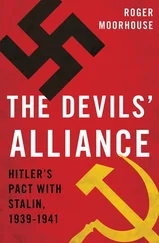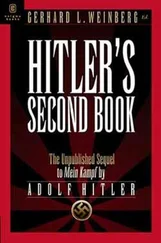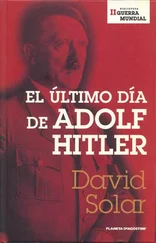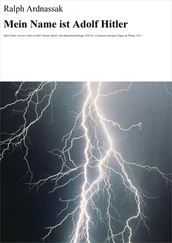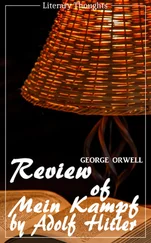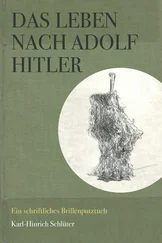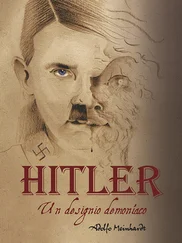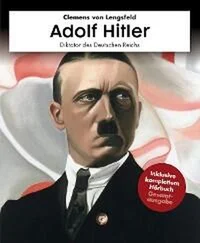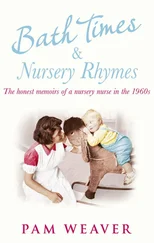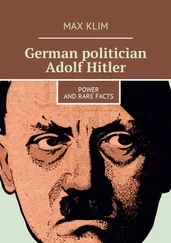Christa Schroeder - He Was My Chief - The Memoirs of Adolf Hitler's Secretary
Здесь есть возможность читать онлайн «Christa Schroeder - He Was My Chief - The Memoirs of Adolf Hitler's Secretary» весь текст электронной книги совершенно бесплатно (целиком полную версию без сокращений). В некоторых случаях можно слушать аудио, скачать через торрент в формате fb2 и присутствует краткое содержание. Город: Barnsley, Год выпуска: 2012, ISBN: 2012, Издательство: Frontline Books, Жанр: История, Биографии и Мемуары, на английском языке. Описание произведения, (предисловие) а так же отзывы посетителей доступны на портале библиотеки ЛибКат.
- Название:He Was My Chief: The Memoirs of Adolf Hitler's Secretary
- Автор:
- Издательство:Frontline Books
- Жанр:
- Год:2012
- Город:Barnsley
- ISBN:978-1-7830-3064-4
- Рейтинг книги:4 / 5. Голосов: 1
-
Избранное:Добавить в избранное
- Отзывы:
-
Ваша оценка:
- 80
- 1
- 2
- 3
- 4
- 5
He Was My Chief: The Memoirs of Adolf Hitler's Secretary: краткое содержание, описание и аннотация
Предлагаем к чтению аннотацию, описание, краткое содержание или предисловие (зависит от того, что написал сам автор книги «He Was My Chief: The Memoirs of Adolf Hitler's Secretary»). Если вы не нашли необходимую информацию о книге — напишите в комментариях, мы постараемся отыскать её.
He Was My Chief: The Memoirs of Adolf Hitler's Secretary — читать онлайн бесплатно полную книгу (весь текст) целиком
Ниже представлен текст книги, разбитый по страницам. Система сохранения места последней прочитанной страницы, позволяет с удобством читать онлайн бесплатно книгу «He Was My Chief: The Memoirs of Adolf Hitler's Secretary», без необходимости каждый раз заново искать на чём Вы остановились. Поставьте закладку, и сможете в любой момент перейти на страницу, на которой закончили чтение.
Интервал:
Закладка:
Hitler considered Greece and Rome to have been the cradle of culture. It was there that the concepts of cosmos, spirit, nature and science had first found expression. He frequently made known his satisfaction that through his travels to Rome and Florence it had been possible for him to admire the immortal masterpieces which he had only known in the past from photographs. He rejected Italian modernism. He found it too closely related to Impressionism and Expressionism. This ‘artless art’◦– his own term◦– was in his opinion the work of the Jews. They had made a great hoo-ha about this garbage so as to bump up the price while keeping for themselves only old masters. He did not think much of most contemporary German artists although he did frequently buy their works, even those he did not like, in order to give them some encouragement. ‘Our modern artists’, he said, ‘can never give the same attention to detail, nor have the patience, as those of the great art epochs.’ Here he meant the Antique and Romantic epochs: he rejected the Renaissance because it was too closely associated with the cult of Christianity.
Art dealers knew that Hitler was not interested in anything up to and including the fourteenth century. He left Göring to look out for Early and Late Gothic. All paintings obtained by Hitler through art dealers were paid for above board. The money came from the so-called Postage Stamp Fund devised by post minister Ohnesorge. Every stamp bearing Hitler’s image brought him a small royalty, especially special stamps with his head commemorating a Nuremberg rally, art exhibitions, the annexations of Austria and the Sudetenland, and his birthdays. The journal of art purchases was kept by Schaub under lock and key although I made the entries in it.
Hitler’s plans with regard to building art galleries were far-reaching. Every town should have a small picture gallery. Linz would have the finest one. Hitler’s passion for Linz was extraordinary. He had also planned a huge museum for the city, with a hall for each individual century. The paintings would not be crowded together as they are at the Louvre◦– ‘touching each other’, as he said◦– and the individual halls would have furniture of the period. The Linz museum was one of his favourite conversation pieces at evening tea.
Hitler had a true passion for architecture. He had read a great deal of specialist literature and knew all epochs in great detail. He had little feeling for the Romanesque style and rejected Gothic out of hand because it was contaminated with Christian mysticism. His admiration was focused on the Baroque and its creations in Dresden and Würzburg. It is superfluous to mention his enthusiasm for the new German style, for he himself had been the force behind it, although the true creator of the neo-Greek Classic style had been Professor Troost. After the architect’s death, Hitler laid a wreath on his grave at each anniversary.
Hitler’s knowledge of architecture was astounding. He knew by heart the measurements and ground plans of all important buildings in the world. In his opinion the architecture of Paris and Budapest towered over all other capital cities. During the war he said more than once: ‘that it would be his happiest day when he could cast off his uniform and devote himself to matters of art’. He had worked out a gigantic programme for the reconstruction of cities destroyed by war and for artistic monuments. He took pride in his order:
…that every historic building is to be photographed in colour inside and out: and it is to be done so thoroughly that future architects and artists will have exact files to work from, for the culturally irreplaceable heritage of earlier times must be rebuilt, and rebuilt so true to the original as only people can. And colour photographs make that possible!
In his enthusiasm for his own ideas he co-opted architects for talks. He would sketch out for them what he had in mind. I have seen architects and engineers of renown staggered by his ability and imagination. Even in the war he could always find time to debate architecture and art. Hitler’s plans for postwar Berlin and Hamburg were simply immense. Whenever he declared: ‘I will make Berlin into the finest city in the world!’ he would straighten up, and his voice and gestures dispelled all doubts. The idea of rebuilding Germany lent Hitler new, unexpected vitality even when he was spent physically. If he returned from a taxing situation conference exhausted, he would quickly find reserves of energy if a technical person invited him to look over new building plans and models. In February 1945 Professor Hermann Giesler brought the great model of Linz to the Reich Chancellery cellars. Hitler would often stand before this model and tell people (I remember particularly Dr Ley and Kaltenbrunner) how he would rebuild Linz. He also planned for the city a round porcelain hall, all in white and gold.
The two SS men from the Berlin Hauptamt brought false identity papers for Johanna Wolf and myself. Upon receipt I destroyed everything bearing my true name. It was not much, for I had lost my papers with the trunk in the Börnersdorf air crash. I even threw out my leather jewellery box with my initials ‘C.S.’ so unthinking had I become. I waited daily for Johanna Wolf, but for understandable reasons she failed to return. The next time I saw her was in internment, but they always kept us separated there. The house staff gradually left the bunker one after another. The SS-Begleitkommando wanted to drive to Linz to link up with Sepp Dietrich who was carrying on the war more or less by himself. They made spasmodic attempts to obtain fuel for the journey and ammunition. Since I was still undecided as to my future they urged me to join them. But what should I do amongst fighting troops? I could not contact anybody for help or advice, even the telephone lines to Hintersee were down. No vehicles were available and it had started to snow again. A thick layer of snow had settled over the damaged road. It required real athleticism to reach the road over the ruined stairway. Some odd types I had never seen before, probably attached to the police squad, had camped in the bunker, boozing and smoking. Any trace of discipline had long gone.
When news came through that the American armoured spearhead was already at Chiemsee, the only possibility open to me to get away from the Berghof was to go with the lorry taking the paintings to Schiffhorn in Austria. I turned down the offer by August Körbers of the SS-Begleitkommando to join his men in their attempt to find the German troops still resisting. I cast a despairing last look at the ruin of the Berghof. Ertl, an old police officer, must have noticed my misery, for he attempted to console me as I climbed into the lorry. During the drive I realised that the time for weighing up the possibilities was now past. I had to decide either to keep going for Austria or get out at Hintersee. As I was still hoping for advice from Schaub and Albert Bormann, and I knew they were staying at Pension Post, I decided for the latter. Upon my arrival I found them both celebrating their escape with champagne. Hitler’s dentist, Professor Blaschke, was with them, a slim man, scrupulous, quiet and pleasant. He was a reformer and if not actually anti-alcohol then at least a strict moderate. With a look of disgust he pointed to the bottle of champagne on the table and said: ‘That is responsible for much!’ He was deflated as I was, for he had not reckoned it would end like this.
Seeing that Schaub and Albert Bormann were only interested in their own futures and on getting away from Hintersee at the earliest opportunity, I remonstrated furiously: ‘It is a scandal for you to look after yourselves and leave us to our fate.’ This hurt Albert Bormann and upset him very much, for he was a soft and sensitive man. He said only that he could not carry on his life with his surname. Schaub and he then disappeared quickly, leaving me alone. Augst, the employee in Albert Bormann’s Chancellery responsible for arranging lodgings in the Pension Post, and who in earlier timers had been very friendly and forthcoming, now made it plain that he was extremely displeased to see me and said: ‘What, now you are coming along too? There are no more single rooms, all that has stopped!’
Читать дальшеИнтервал:
Закладка:
Похожие книги на «He Was My Chief: The Memoirs of Adolf Hitler's Secretary»
Представляем Вашему вниманию похожие книги на «He Was My Chief: The Memoirs of Adolf Hitler's Secretary» списком для выбора. Мы отобрали схожую по названию и смыслу литературу в надежде предоставить читателям больше вариантов отыскать новые, интересные, ещё непрочитанные произведения.
Обсуждение, отзывы о книге «He Was My Chief: The Memoirs of Adolf Hitler's Secretary» и просто собственные мнения читателей. Оставьте ваши комментарии, напишите, что Вы думаете о произведении, его смысле или главных героях. Укажите что конкретно понравилось, а что нет, и почему Вы так считаете.

